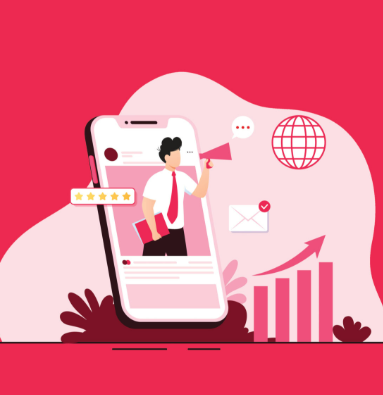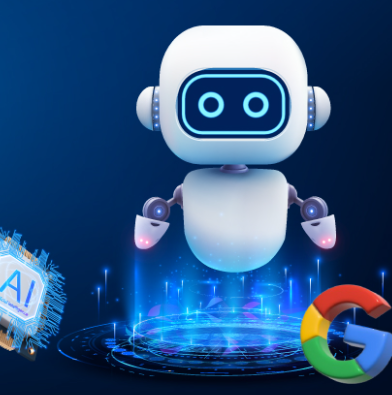
In the fast-paced world of digital marketing, staying ahead of the competition requires not only creativity but also the ability to anticipate future trends. AI-powered predictive analytics is a game-changer in this regard, helping businesses make smarter decisions on targeting, bidding, and budgeting. With predictive analytics, you can refine your Google Ads campaigns to better reach your ideal audience, boost engagement, and maximize ROI. Here’s a look at how predictive analytics powered by AI can optimize your advertising efforts and drive success.
Why Predictive Analytics is Crucial for Google Ads Campaigns
AI in predictive analytics plays a crucial role in identifying patterns and trends in consumer behavior, allowing businesses to make proactive adjustments to their campaigns. Rather than reacting to changes, AI helps businesses anticipate shifts in market dynamics, optimize ad targeting, and personalize content based on real-time data. This level of optimization ensures your ad content stays relevant, engaging, and aligned with user behavior, ultimately leading to improved click-through rates (CTR) and conversions.
By harnessing AI, you can uncover opportunities for growth, refine targeting strategies, and maintain a competitive edge in your industry.
Key Benefits of AI-Driven Predictive Analytics for Google Ads
1. Predictive Search Query Analysis
AI-driven search query analysis helps you predict the keywords and phrases most likely to drive valuable traffic to your site. Unlike traditional methods, predictive analytics considers not just the keywords but the intent behind them. This deeper understanding ensures you serve highly relevant ads, driving better engagement and conversions.
For instance, AI can detect long-tail keywords, which are specific, less competitive search terms that can attract users further along the purchasing journey. By analyzing the context and meaning behind a search query, AI ensures that ambiguous keywords don’t dilute the relevance of your ads, helping you target users more effectively.
2. Automated Ad Copy Creation
AI technology can also enhance ad creation by automating the generation of ad copy. By analyzing historical data on previous campaigns, AI identifies which elements—such as headlines, descriptions, and CTAs—drive the highest engagement and conversions. This allows for real-time optimization of ad copy, ensuring that the most effective messaging is always being used.
While AI can handle the bulk of ad copy generation, human oversight remains crucial. Reviewing and refining the AI-generated content ensures it aligns with your brand voice and complies with advertising standards, creating ads that resonate with your audience while adhering to guidelines.
3. Identifying High-Value Audience Segments
AI in predictive analytics excels at identifying high-value audience segments based on factors like demographics, online behavior, and past purchases. For example, a business selling industrial equipment could use AI to identify decision-makers like purchasing managers or to target specific industries or regions more likely to need their products.
This segmentation allows businesses to create highly targeted campaigns that resonate with the needs and interests of these specific audience groups. By focusing on high-value segments, you can increase the relevance of your ads and improve conversion rates, helping you stand out in a competitive marketplace.
4. Forecasting Seasonal Trends
Seasonality plays a key role in many industries, and AI’s predictive capabilities can help businesses adjust their ad campaigns for maximum impact during peak seasons. By analyzing historical trends, AI can predict when demand for specific products or services is likely to spike. For example, a plumbing company in Vancouver could use AI to detect an increase in searches for “emergency plumbing services” during the winter months due to freezing temperatures.
AI can also consider external factors like weather patterns or holidays, allowing businesses to adjust their campaigns in real-time to ensure ads are seen by the right audience at the right time. These predictive insights help businesses make informed decisions on where to allocate ad budgets, ensuring that your campaigns stay relevant and cost-effective year-round.
5. Monitoring and Preventing Ad Fatigue
Ad fatigue occurs when customers become tired of seeing the same ads repeatedly, leading to diminishing returns. Predictive analytics can help identify early signs of ad fatigue by monitoring user engagement and tracking how frequently customers see your ads. AI can recommend adjustments, such as refreshing ad creatives or changing targeting parameters to prevent ads from losing their impact.
Furthermore, AI-powered sentiment analysis can gauge how users feel about your ads by analyzing comments, reviews, and social media interactions. If negative sentiment begins to rise, it can act as an early warning sign that it’s time to update your ads or shift your strategy, ensuring that your campaigns remain fresh and effective.
6. Using Predictive Analytics for Continuous Improvement
AI-driven predictive analytics doesn’t just help you improve current campaigns—it can also help optimize future campaigns. By continuously analyzing performance data, AI can identify trends, forecast the success of new strategies, and suggest areas for optimization. This ongoing process of testing, learning, and adjusting helps businesses achieve sustained success in their advertising efforts.
For instance, AI can track user behavior across different devices, determine the best times to run ads, and identify new keywords that may be driving traffic. By implementing AI-based predictive insights, businesses can maintain a competitive edge and ensure that their Google Ads campaigns are always optimized for the best results.
Conclusion: Embrace the Future with AI in Predictive Analytics
AI-powered predictive analytics is revolutionizing the way businesses approach Google Ads campaigns. By providing data-driven insights, automating ad creation, and optimizing targeting strategies, AI helps businesses stay ahead of the curve. Whether it’s identifying high-value audience segments, forecasting seasonal trends, or preventing ad fatigue, predictive analytics ensures that every aspect of your campaign is designed to maximize ROI.
As AI continues to evolve, businesses that embrace these capabilities will be better equipped to navigate the complexities of digital marketing and deliver personalized experiences to their customers. If you’re looking to boost your advertising efforts, integrating AI in predictive analytics is a smart move that will help you drive growth and maintain a competitive edge.













